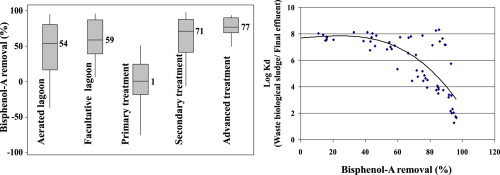
Bisphenol A (BPA): A Closer Look at the Debate and Research
For over ten years, bisphenol A (BPA), a compound widely employed in plastics and packaging, has ignited vigorous discussions among scientists, policymakers, consumer advocates, and the general populace. Present in polycarbonate plastics and the epoxy resins used to coat food cans, BPA can seep into food and drinks in minimal quantities. Due to its structural resemblance to estrogen, worries have surfaced about its capability to interfere with hormonal systems, particularly in sensitive groups such as infants and pregnant women. But how significant is the threat? And what does the research truly indicate?
The Essentials: Defining BPA
BPA is an industrial substance that has been utilized since the 1960s to produce sturdy, transparent plastics and resilient epoxy resins. It’s frequently found in products like water bottles, food storage vessels, baby bottles (until recent measures to eliminate them), and the linings of metal food cans. Since it can migrate into food and beverages, BPA exposure is prevalent: investigations have detected measurable levels in the urine of most individuals tested.
Considering that BPA can weakly imitate estrogen, many have feared that this widespread exposure might be linked to developmental, reproductive, or endocrine-related health complications—especially given that hormones function at very low levels in the human body. Critics, including journalists like Nicholas Kristof from The New York Times, claimed that the U.S. Food and Drug Administration (FDA) and other authorities were neglectful—or yielding to industry influence—by not completely prohibiting BPA.
Nonetheless, a more intricate narrative unfolds when we explore the foundational science.
Why Regulatory Agencies Consider BPA Safe
Regulatory organizations such as the FDA and the European Food Safety Authority (EFSA) have carried out comprehensive evaluations of the risks posed by BPA and have consistently concluded that current exposure levels from food and beverage containers do not raise alarms—particularly for adults.
Here’s why:
1. Extremely Low Exposure Levels
Data from the FDA indicates that the average adult consumes significantly less than 1 microgram of BPA for every kilogram of body weight per day. To illustrate, a 70-kilogram individual (approximately 154 pounds) ingests less than 70 micrograms each day—an amount regarded as far below established safety limits.
2. Quick Metabolism and Excretion
Most BPA ingested through food is swiftly absorbed but almost instantly neutralized by the liver. The liver modifies BPA by attaching molecules like glucuronic acid or sulfate, transforming it into a water-soluble and biologically inactive form. These altered versions of BPA are then excreted in urine and do not remain in the bloodstream. The half-life of unaltered BPA in the human system is under two hours, while these modified forms are eliminated in less than six hours.
Research has shown that in adults, less than 1% of ingested BPA enters systemic circulation in its original, potentially estrogen-mimicking state. The concentrations found in blood samples are typically so low they cannot be measured with standard laboratory methods.
3. Laboratory Contamination in Initial Studies?
A number of early studies raised alarms concerning BPA due to unexpectedly high concentrations found in human blood. However, later research indicated that many of these studies may have faced contamination issues. BPA is frequently employed in laboratory-grade plastics, such as collection tubes and syringes. If these items contained BPA, they might have contaminated samples during collection or examination, artificially inflating the detected levels.
Once these possible sources of contamination were addressed, studies had difficulty identifying BPA in blood samples at all.
4. Limited Estrogenic Activity
Although BPA can attach to estrogen receptors, it does so thousands of times less efficiently than natural estrogen (estradiol). This suggests that the concentration necessary to induce significant estrogen-like effects is significantly higher than what individuals generally encounter through food and beverage intake.
Animal research backs this up. In one study, rats were intentionally given BPA at levels hundreds of times higher than what humans consume daily—and researchers still found no signs of negative health impacts.
What About Infants and Pregnant Women?
A genuine area of concern is whether BPA might have more intense effects on fetuses, infants, or younger children. Their metabolic systems are still maturing and may not process chemicals as effectively as those of adults.
However, researchers have utilized indirect methods to assess the risk. For instance, BPA metabolism rates in infants are estimated based on data from other medications like Tylenol (acetaminophen)—which also undergoes glucuronidation and sulfation in the liver. These models suggest that even infants quickly neutralize BPA and excrete it, albeit slightly more slowly than adults.
Studies involving baby monkeys—which are physiologically closer to humans than rodents—support the same conclusion: BPA is swiftly metabolized and does not accumulate in the body, even in younger organisms.
While prudence is advisable when making these evaluations, the bulk of scientific evidence thus far indicates that infants and fetuses are unlikely to face harmful levels of BPA under current usage patterns.
Public Sentiment vs. Scientific Agreement